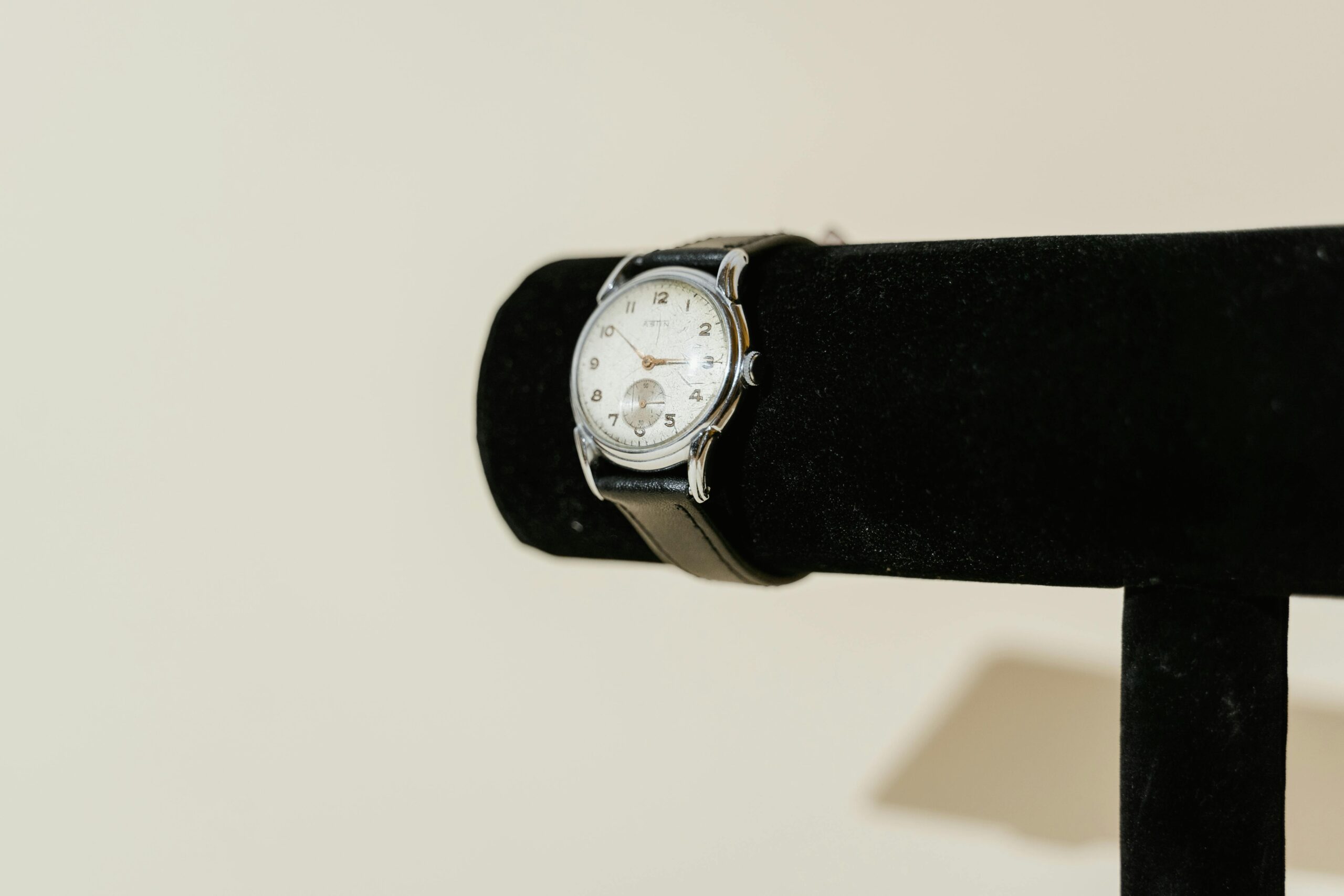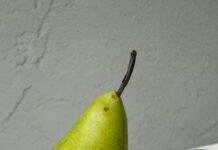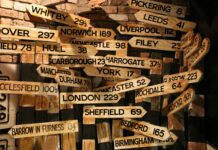Have you ever wondered what makes Sheffield silver so uniquely captivating and highly sought after in the world of antiques? This exquisite form of silverware, hailing from the historic city of Sheffield in England, boasts a rich heritage that dates back to the 18th century. Known for its superior craftsmanship and timeless elegance, Sheffield silverware has become a symbol of luxury and sophistication. But what exactly sets it apart from other types of silver? Is it the intricate designs, the hallmark authenticity, or perhaps the enduring quality that collectors and enthusiasts alike can’t resist? Exploring the history of Sheffield silver cutlery reveals fascinating insights into the traditional techniques that have been carefully preserved through generations. Whether you’re a seasoned collector searching for rare Sheffield silver antiques or a curious newcomer eager to learn about the best places to buy authentic pieces, this guide will spark your interest. Dive deep into the world of Sheffield silver hallmark identification and discover why this precious metal continues to enchant people worldwide. Are you ready to uncover the secrets behind the beauty and value of Sheffield silver collectibles? Let’s embark on an unforgettable journey through the legacy of Sheffield’s finest silver craftsmanship.
Unveiling Sheffield Silver: 7 Stunning Craftsmanship Techniques That Define Timeless Elegance
Sheffield silver have been a topic of interest for many collectors and history buffs alike, but not everyones heard about it in detail. You might ask, what is Sheffield silver anyway? Well, it’s a type of silverware that was made in Sheffield, England, mostly during the 18th and 19th centuries. But, not really sure why this matters, but it’s considered precious because of the unique method used to make it, called Sheffield plate.
So, Sheffield silver isn’t actually solid silver all the way through. Instead, it’s a layer of silver fused to a base metal, usually copper. This technique was invented by Thomas Boulsover around 1743. The idea was to create items that looked like solid silver but were much cheaper to produce. Clever, right? But sometimes people confuse it with sterling silver, which is a whole different kettle of fish.
What Makes Sheffield Silver Special?
| Feature | Description |
|---|---|
| Composition | Silver layer on copper base |
| Origin Date | Around 1743 |
| Maker | Thomas Boulsover |
| Popularity Peak | 18th and 19th centuries |
| Types of Items | Cutlery, trays, teapots, candlesticks, and other household items |
Now, maybe it’s just me, but I feel like the charm of authentic Sheffield silverware pieces comes not just from their appearance but the story behind the production. You could find all sorts of things made with this technique, from fancy tea sets to humble candlesticks. And let me tells you, some of these items have survived for centuries. That’s gotta count for something.
If you’re thinking about collecting Sheffield silver collectibles, there are a few things to keep in mind. First, spotting real Sheffield silver can be tricky because it looks like solid silver but isn’t. You have to look for telltale signs; for example, sometimes the silver layer wears off, revealing the copper underneath. Also, the hallmarking system is different from sterling silver.
How to Identify Sheffield Silver
- Look for a layered effect on the edges or where the piece may have worn down.
- Check for any hallmarks or stamps indicating Sheffield origin — though not all pieces have them.
- Be suspicious of things that are too shiny or perfect; genuine Sheffield silver often shows some wear.
- If you hear a dull thud when tapping it, it might be plated rather than solid silver.
- Ask the seller lots of questions — don’t be shy!
You might be wondering how to care for your Sheffield silver plated items without damaging that delicate silver layer. Well, harsh polishing can wear away the silver, so it’s best to clean gently with a soft cloth and mild soap. Avoid abrasive cleaners at all costs, unless you want to reduce your prized possession to a coppery mess.
Here’s a quick list of dos and don’ts for caring Sheffield silver:
- Do use warm water and gentle soap for cleaning.
- Don’t use silver dips or abrasive pads.
- Do dry thoroughly to prevent water spots.
- Don’t leave it soaking for hours.
- Do store in a dry place away from humidity.
Now, for those who want to get technical, here’s a little table comparing Sheffield silver vs sterling silver:
| Aspect | Sheffield Silver | Sterling Silver |
|---|---|---|
| Composition | Silver layer over copper | 92.5% pure silver |
| Weight | Lighter due to base metal | Heavier due to solid silver |
| Durability | Can wear through silver layer | More durable, less prone to wear |
| Cost | Generally cheaper | Usually more expensive |
| Hallmarks | May have Sheffield marks | Usually has sterling marks |
| Appearance | Looks like silver but can show copper | Consistently silver in appearance |
If you’re into antiques or vintage shopping, knowing these differences is a lifesaver. Because sometimes, you’ll see a shiny tea set labelled as “silver” but it’s really just Sheffield silverplate. Not that there’s anything wrong with that, but it’s good to know what you’re buying.
And speaking of buying, the market for Sheffield silver antiques has been pretty interesting lately. Prices fluctuate depending on rarity, condition and the type of item. For instance, a Sheffield silver teapot from the late 18th century can fetch a decent price at auctions, especially if it’s in good nick and has a maker’s mark.
Popular Sheffield Silver Items to Look Out For
- Tea sets (pots, creamers, sugar bowls)
- Cutlery (forks, knives, spo
How Sheffield Silver Became a Symbol of British Heritage and Exquisite Design
Sheffield silver is one of those things that might sound posh and fancy, but honestly, not everyones heard about it, which is kinda weird if you ask me. So, what is this Sheffield silver anyway? Basically, it’s a type of silver plating, made famous in the city of Sheffield, England. The process was invented in the mid-18th century and became super popular because it was a cheaper way to get the look of solid silver without breaking the bank.
Now, you might be wondering, “Why should I care about Sheffield silver?” Well, maybe it’s just me, but I feel like knowing about it can really help if you’re into antique collecting or just want to impress your mates at a dinner party. Plus, if you ever come across old cutlery or tea sets, knowing whether they are made from authentic Sheffield silver can up their value big time.
What Makes Sheffield Silver Different?
| Feature | Description |
|---|---|
| Material | Base metal (usually copper) with a silver layer |
| Thickness of silver | Thicker than typical silver plating |
| Durability | More resistant to wear and tarnish |
| Production method | Sheffield plate technique, invented in 1743 |
The thing is, the silver layer in Sheffield silver cutlery is usually thick enough to last ages, which isn’t always the case with other silver-plated items. But, not really sure why this matters, but the process involves fusing silver onto copper sheets by heating them, and then they are hammered and rolled out into thin plates. This technique was revolutionary back then and allowed Sheffield to become a big player in the silver market.
Common Uses of Sheffield Silver
- Cutlery (knives, forks, spoons)
- Tea sets and coffee pots
- Decorative trays and bowls
- Jewellery and small trinkets
It’s funny, because even though it looks like solid silver, Sheffield silver is actually a clever illusion. The base is cheap, but the top layer has that classic silver shine. So, if you ever get a chance to buy something labelled as Sheffield silverware antiques, just remember to check how thick the silver layer is, or you might end up with something that wears down quickly.
How to Spot Real Sheffield Silver?
This can be tricky, but here’s a quick checklist that might help:
- Look for hallmarks or stamps — authentic pieces usually have a city mark (like a crown for Sheffield).
- Check the weight — Sheffield silver items tend to feel heavier than regular silver plated things.
- Test the edges — sometimes the copper base shows through on worn edges.
- Use a magnet — silver isn’t magnetic, so if it sticks, it’s probably not silver.
| Hallmark Symbol | Meaning |
|---|---|
| Crown | Sheffield city mark |
| Lion Passant | Sterling silver standard |
| Date letter | Year of manufacture |
Not to complicate things further, but sometimes reproductions or fakes are made, so if you’re really serious about buying Sheffield silver antiques, getting a professional appraisal might be worth it.
Sheffield Silver vs Sterling Silver
People often get confused between these two, but they are quite different. Sterling silver is 92.5% pure silver, stamped with “925,” and is solid silver all the way through. Sheffield silver, on the other hand, is just a layer of silver on a base metal. It’s a bit like the difference between a posh dinner and a takeaway meal — looks similar, but totally different inside.
| Type | Silver Content | Price Range | Durability |
|---|---|---|---|
| Sheffield Silver | Thin silver layer | Cheaper | Good, but can wear |
| Sterling Silver | 92.5% silver | More expensive | Very durable |
Maybe it’s just me, but I think a lot of people prefer the look of sterling silver because it feels more “authentic.” But Sheffield silver has its charm, especially when you want that vintage vibe without spending a fortune.
Caring for Your Sheffield Silver
If you have some Sheffield silver pieces, you’d want to keep them looking nice, right? Here’s some practical advice on maintaining them:
- Avoid dishwasher washing — hand wash only with mild soap.
- Dry immediately to prevent water spots or rust on the base metal.
- Use silver polish sparingly — over-polishing can wear through the silver layer.
- Store in anti-tarnish cloths or bags.
Pro tip: If you notice any greenish spots, that’s copper oxidising — don’t freak out, just clean gently with a soft cloth.
Where to Find Sheffield Silver Today?
If you’re keen on adding
The Ultimate Guide to Identifying Authentic Sheffield Silver Pieces in 2024
Sheffield silver is one of them things that not everyone know about, but once you do, you kinda can’t stop noticing it everywhere. If you’ve ever stumble upon an old spoon or a fancy teapot at your grandma’s house, chances are that it might be Sheffield silver. Now, I’m not really sure why this matters, but it’s got this old-school charm that just can’t be beat, even in today’s world of flashy bling and mass production.
What exactly is Sheffield silver anyway? Well, it’s not pure silver as many might think. It’s actually a layer of silver that’s been fused onto a base metal, usually copper. This technique is called “silver plating” but Sheffield silver is a bit different because it’s made to last longer and look like solid silver, or so they say. The process started way back in the 18th century in the city of Sheffield, England, which was famous for its metalwork. This method made silverware affordable for the middle class, instead of just the posh folks who could afford solid silver.
Here’s a quick table that kinda breaks down the differences between Sheffield silver and solid silver:
| Feature | Sheffield Silver | Solid Silver |
|---|---|---|
| Composition | Silver layer on base metal (copper) | Pure silver or sterling silver |
| Durability | Durable but can wear over time | Very durable |
| Cost | More affordable | Expensive |
| Appearance | Looks like silver | Genuine silver shine |
| Common uses | Cutlery, teapots, trays | Jewellery, cutlery |
Maybe it’s just me, but I always thought the idea of a “fake silver” was a bit cheeky. But honestly, Sheffield silver cutlery has saved many a dinner party from looking cheap. You know when you’ve got guests and you want to impress but not bankrupt yourself? This is where it shines, literally and figuratively.
One interesting thing about Sheffield silver antique pieces is that they often have maker’s marks stamped on them. These marks can tell you who made the piece, when it was made, and sometimes even what quality of silver was used. It’s like a little secret code for the silver nerds out there. If you’re hunting for genuine vintage items, knowing these marks can be your best friend.
A list of common Sheffield silver marks include:
- The crown and anchor symbol
- The lion passant (which usually means sterling silver, but sometimes gets confused with Sheffield silver)
- The date letter mark
Tracking these down can be a bit of a treasure hunt, but it’s fun if you like that sort of thing. Not everyone does, I know.
Okay, here’s a quick do’s and don’ts when it comes to caring for Sheffield silverware:
Do’s
- Clean gently with a soft cloth
- Use mild soap and warm water, never harsh chemicals
- Polish occasionally to keep the shine
Don’ts
- Don’t put in the dishwasher (it’ll ruin the plating)
- Avoid abrasive sponges or cleaners
- Don’t soak for too long or the silver layer might start to peel
Honestly, I’ve seen some people treating their Sheffield silver like it’s just another spoon, which is kinda sad. These things can last for decades if you look after them, but they do need a little TLC.
Now, if you’re curious about the market for Sheffield silver items, it’s surprisingly alive. There’s a niche crowd that collects these pieces, especially the older ones from the 19th century. Prices can range from a few pounds for common cutlery to hundreds for rare or intricately designed teapots. So if you’ve got some lying around in your attic, maybe it’s time to dust them off and see what you’ve got.
Let’s break it down with a little list of the most popular Sheffield silver items found today:
- Cutlery sets (forks, knives, spoons)
- Tea sets (teapots, creamers, sugar bowls)
- Decorative trays and plates
- Candlesticks
- Jewellery (rings, brooches, cufflinks)
You might be wondering if Sheffield silver jewellery is worth buying. Well, it’s not as valuable as solid silver jewellery, but it has a unique vintage appeal. Plus, you can get a bit more bang for your buck if you’re looking for something stylish and affordable.
Here’s a small sheet of pros and cons for owning Sheffield silver:
| Pros | Cons |
|---|---|
| Affordable way to enjoy silver look | Silver layer can wear off |
| Durable enough for everyday use | Requires careful maintenance |
| Lots of vintage designs |
Why Collectors Are Rushing to Own Rare Sheffield Silver: Top 5 Investment Tips
Sheffield silver has always been a bit of a mystery to me, and maybe to others too. It’s one of those things that sounds posh and fancy, but when you actually try to explain what it is, you kinda stumble. So, let’s take a wander through the world of Sheffield silver flatware and see what makes it tick — or at least, what people say makes it tick.
First off, Sheffield silver isn’t exactly pure silver, if you were thinking that. It’s what they call “silver plate,” which means a thin layer of silver is fused onto a base metal, usually copper or something cheaper. Now, I’m not really sure why this matters, but apparently, it’s a big deal for collectors and people who want that shiny look without paying a fortune. Here’s a quick table to give you an idea:
| Item | Material | Approximate Silver Content | Typical Use |
|---|---|---|---|
| Sheffield Silverware | Silver plated copper | Thin silver layer | Cutlery, trays, teapots |
| Sterling Silver | 92.5% silver | Solid silver | Jewellery, high-end cutlery |
| Sheffield Silverplate | Silver alloy layer | Thin silver coating | Decorative household items |
You might be wonderin’ why it’s called “Sheffield” silver? Well, Sheffield’s a city in England, known historically for its steel production and cutlery manufacturing. Back in the 18th and 19th centuries, Sheffield became the epicentre for silver plating techniques, and that’s how the name stuck. But honestly, how many people outside of UK even knows about Sheffield’s silver legacy? Probably not many.
Now, let’s chat about the process itself — Sheffield silver is made using a method called “electroplating.” Basically, they dip a base metal item into a bath of silver ions and zap it with electricity so the silver sticks to the surface. Sounds simple, but apparently it took years to perfect this. Maybe it’s just me, but I feel like if you could just dip stuff in silver and call it a day, everyone would be doing it. There’s a bit more science behind it, trust me.
If you into collecting or buying antique Sheffield silver cutlery, you’ll likely want to look out for certain marks or hallmarks. These little stamps can tell you a lot about where and when the item was made. Most genuine Sheffield silver has a crown and a rose stamp, sometimes with the word “Sheffield” stamped along. Without them, you might just have a fancy silver-plated knockoff. Here’s a small list of common Sheffield silver hallmarks:
- Crown symbol
- Rose emblem
- “Sheffield” text mark
- Date letters (sometimes tricky to decode)
- Maker’s initials
One thing that’s pretty cool is how Sheffield silver items can often last for decades, if not centuries, if looked after properly. But beware — silver plating wears off over time if you use it too much or clean it harshly. I’ve seen some older Sheffield silver trays where the base copper is showing through, and honestly it looks a bit sad. So, if you got your hands on some vintage Sheffield silverware sets, treat it gently; no dishwasher abuse, please.
Here’s a little practical tip for anyone who’s thinking about buying or using Sheffield silver: always check the thickness of the silver plating. Thicker plating means it’ll last longer and won’t just peel off in a year or two. Some sellers will brag about the “microns” of silver, which is basically how thick the silver layer is. Anything less than 5 microns? Probably gonna be rubbish after a while.
| Thickness (Microns) | Durability | Typical Price Range |
|---|---|---|
| < 5 | Poor | Budget Sheffield silverware |
| 5 – 10 | Moderate | Mid-range pieces |
| 10+ | Excellent | High-quality Sheffield silver |
So, why bother with Sheffield silver at all? Well, for one, it’s cheaper than solid silver, which is a big plus. Also, some people just love the vintage or antique vibe it brings to a table setting. You can get some real charm and character from these pieces that you just don’t get with modern stainless steel cutlery.
On the flip side, if you’re the type who likes everything to be shiny and perfect, Sheffield silver might frustrate you. It tarnishes just like real silver, and without proper care, it’ll lose its lustre and start looking dull. Not to mention, if you’re expecting solid silver quality, you’ll probably be disappointed.
Here’s a quick rundown of pros and cons, just so it’s clear:
| Pros | Cons
Exploring the History and Evolution of Sheffield Silver: From Industrial Roots to Luxury Artistry
Sheffield silver, now there’s a topic that spark a bit of curiosity, isn’t it? For those who might not know, Sheffield silver isn’t actually made of pure silver, but it sure looks like it. It’s a type of silver plating that was developed in the city of Sheffield, England, back in the 18th century. If you’re into antiques or just fancy a bit of vintage charm, Sheffield silver collectibles might be something you want to dig into.
So, why’s Sheffield silver so special? Well, it was invented by a chap called Thomas Boulsover around 1743. He figured out a way to fuse a thin layer of silver onto a base metal (usually copper) by heating them together. This was clever because full silver pieces were pretty expensive, but with Sheffield silver, you got the look without the hefty price tag. Not really sure why this matters, but it’s kinda like the original budget-friendly bling for your cutlery and tea sets.
Here’s a quick table showing you the difference between Sheffield silver and other types of silverware:
| Type of Silver | Composition | Typical Use | Price Range |
|---|---|---|---|
| Sterling Silver | 92.5% silver, 7.5% other metals | Fine jewellery, cutlery | High |
| Sheffield Silver | Silver plated on copper base | Decorative & practical | Moderate |
| Electroplated Silver | Silver plated on base metals | Everyday cutlery | Low |
You might noticed that Sheffield silver is sometimes confused with electroplated silver, but they’re not quite the same. The old Sheffield method was more like fusing, while electroplating use an electric current to deposit silver ions onto a surface.
If you ever stumble upon some old Sheffield silverware for sale, here’s a few tips you might want to know:
- Look for the hallmark: Genuine Sheffield silver often have a crown and the word “Sheffield” stamped on it.
- Check for wear and tear: Since it’s silver plated, the layer can rub off exposing the base metal underneath.
- Test the weight: Sheffield silver items tend to be heavier than electroplated ones because of the copper core.
- Don’t be fooled by price: Some sellers might try to pass off electroplated pieces as Sheffield silver, so always ask questions!
Maybe it’s just me, but I find the history behind Sheffield silver kinda fascinating. Like, back in the day, it was a big deal because it made silver more accessible to the middle class. Imagine having a fancy tea party with proper silver cutlery without bankrupting yourself. Today, it’s more about collectors and people who appreciate the craftsmanship, even if it’s not pure silver.
Here’s a quick checklist if you’re thinking to start your own collection of authentic Sheffield silver antiques:
- Verify the hallmark authenticity.
- Inspect the plating thickness and condition.
- Research the maker or manufacturer; some are more valuable.
- Consider the style and era – Victorian Sheffield silver is quite popular.
- Beware of modern reproductions — they can look very similar but lack value.
One of the most common uses of Sheffield silver was in tableware, especially tea sets, trays, and cutlery. They had this elegant shine that made any dinner feel posh. Not saying you should start hosting royal banquets, but having a Sheffield silver teapot definitely ups the ante on your kitchen shelf.
Here’s a rough idea of what you might expect to find in a typical Sheffield silver tea set:
| Item | Common Weight (grams) | Price Range (£) | Notes |
|---|---|---|---|
| Teapot | 600-800 | 50 – 200 | Check for dents and marks |
| Sugar Bowl | 300-500 | 30 – 100 | Lid should fit snugly |
| Milk Jug | 200-400 | 20 – 80 | Look for maker’s mark |
| Tray | 1000-1500 | 100 – 300 | Often elaborately decorated |
Now, not everything about Sheffield silver is rosy. Because it’s plated, the silver layer can wear off if you’re not careful washing or using it. Some people get a bit annoyed when they discover their “silver” items are actually just plated. I mean, it’s not like you’re going to eat off solid silver every day, but it’s a thing to keep in mind.
If you want to keep your Sheffield silver looking tip-top, avoid the dishwasher, and use gentle cleaning methods. A soft cloth and mild soap usually does the trick. And for the love of
Conclusion
In conclusion, Sheffield silver remains a timeless symbol of British craftsmanship and quality, cherished for its distinctive finish and historical significance. From its origins in the 18th century to its enduring appeal today, Sheffield silverware exemplifies a blend of aesthetic elegance and practical durability. Whether you are a collector, a history enthusiast, or simply appreciate fine tableware, investing in Sheffield silver offers both beauty and heritage. Its unique production process, involving a layer of silver fused onto a copper base, ensures affordability without compromising on appearance. As trends evolve, Sheffield silver continues to hold a special place in homes and collections alike, serving as a reminder of traditional artistry in a modern world. If you’re considering adding a touch of classic sophistication to your living space or collection, exploring Sheffield silver is undoubtedly a worthwhile endeavour. Embrace the legacy and charm that this iconic silverware brings to everyday life.













